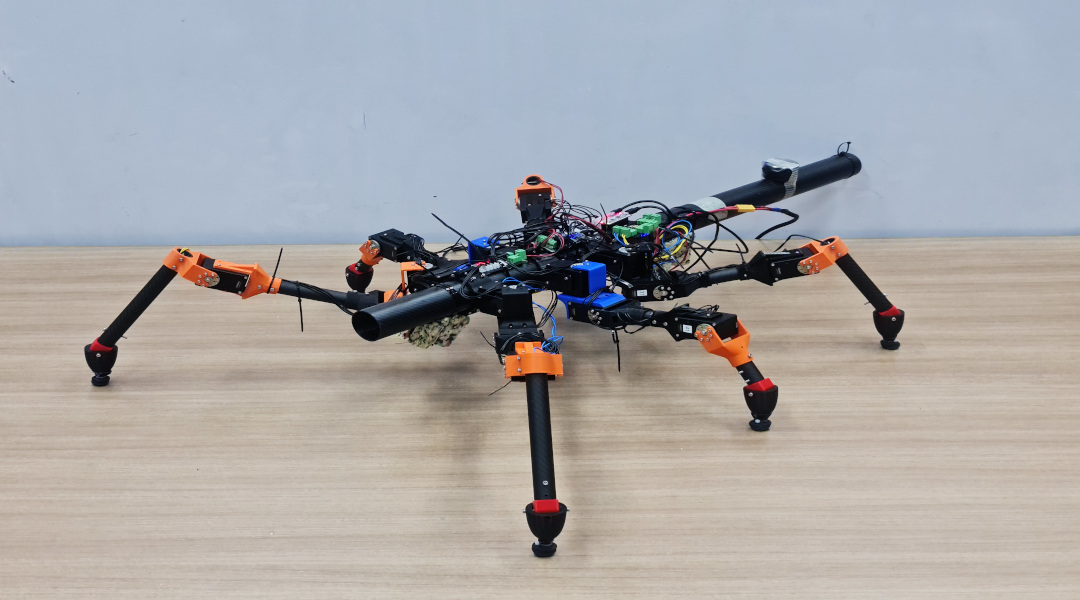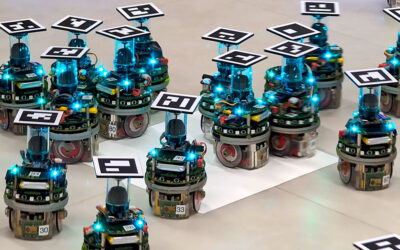Crawling, walking, swimming, and even flying come naturally to creatures great and small across the animal kingdom. But replicating those modes of locomotion in robots is far from straightforward.
A newborn deer can be up and moving within a few hours, but attempts to use machine learning to teach robots to walk are hindered by the need for significant computing power and days or weeks of simulated trial and error. Researchers are instead looking to learn from nature, mimicking the approach that lets young animals get moving to help robots achieve forward motion with relatively simple control systems.
The unique body shape of the stick insect, with its asymmetric legs, presents an unexplored paradigm in both biological mechanics and the robotic replication of movement. Now, a study has deciphered the secrets of stick insect movement, tracking the joint and limb motion to inform a new system of self-organized limb movement in robots.
Machines built with this approach, which uses simple feedback loops steering individual oscillating joints, could lead the way to improved search and rescue machines, delivery robots, and even exoskeletons to help injured people walk again.
Insect inspiration
The insect world harbors countless creative approaches to movement, each engineered over millennia for efficiency and speed with relatively simple control systems. Professor Poramate Manoonpong and his team at the University of Southern Denmark and Vidyasirimedhi Institute of Science and Technology in Thailand have translated the movement mechanisms of worms, dung beetles, and millipedes into functional robots that push forward not just the field of applied robotics, but also our fundamental understanding of biomechanics of the animal world.
Their latest work, published in Advanced Theory and Simulations, examines the unique movement of stick insects, for which they teamed up with researchers from Kiel University in Germany.
“There are two questions we wanted to address,” Manoonpong said. “One is a basic science question: How do animals with different body geometries handle complex locomotion? This sort of heterogeneous leg combination still hasn’t been fully explored and remains an open question. From the robotic side, most robots you see have symmetrical layouts. But we think asymmetry might give additional benefits. For example, stick insects can cross large gaps because their long fore-legs can reach across.”
The first step was to analyze the insect movement, which was started at the Department for Functional Morphology and Biomechanics at Kiel University. “We analyzed how stick insects with strongly heterogeneous leg lengths walk, and captured their foot movement profile,” Manoonpong explained. “We then translated the trajectory of the feet into the biorobotic model.”
Each leg has three joints and a distinct pattern of rhythmic oscillation that was captured and conveyed to a robotic simulation. This forms the basis of an elegantly simple and versatile system for coordinating movement across the limbs.
Self-organization
“Each foot contact feeds back to its own oscillator,” said Manoonpong, explaining the simple system that governs the movement in the robots. “Information from the foot tells the oscillator to speed up or slow down, so if it cannot lift it stays in place.”
This rule works independently in each of the 6 limbs of the robot, and the result is self-organization of movement without the need for a central connection between each appendage.
“The nice thing about this is that the limbs don’t have to talk to each other, because the foot contact information is enough to relay what is happening in the system,” Manoonpong explained. “Each limb is connected to a central body, so if the front leg tries to lift, the force distribution to the remaining limbs will be higher, and that is the information we need to adjust the swing and stance movements of the legs.”
When the robot first begins to move, the legs oscillate in time, and as a result, all six feet remain on the floor, with no forward motion (see the video below). However, organic movement soon arises as feedback from the foot contact starts to automatically adjust the swing and stance motions of each leg.
“That’s what we mean by self-organized locomotion,” said Manoonpong. “We don’t pre-program how it should move forward, but we let the system find out based on its body dynamics.”
As a result, in some tests the robot almost perfectly mimicked stick insect motion, but in others novel patterns of movement arose.
This simple form of self-organized movement can be employed in a range of robot setups, including those with more conventional symmetrical layouts, and this low-intensity versatility could lead to a wide range of real-world applications.
Moving forward
A robotic system that can autonomously adapt its gait and function with simple control systems could find use across industries. “We want to develop machines that could be used on uneven or unpredictable terrain,” said Manoonpong. “Industry bodies have contacted us, interested in robots that can carry out inspections in different environments, but there are also potential uses in search and rescue, in agriculture, and in package delivery.”
The research team’s other work on replicating dung beetle locomotion is a particularly novel approach to package movement. “The next challenge is helping people,” hoped Manoonpong, who sees the impact of this work reaching the realms of healthcare.
“We have developed this basic understanding of how insects walk and the neural networks involved. We have extended these neural control mechanisms to robotics. Now, we want to apply these oscillators and mechanisms of motor control to exoskeletons that help subjects with asymmetric gaits walk naturally,” he added.
This could prove valuable to patients following a stroke or amputation, and be a powerful translation of fundamental insect biology into life-changing technology.
Reference: Pooramate Manoonpong et al., Self-organized Stick Insect-like Locomotion Under Decentralized Adaptive Neural Control: From Biological Investigation to Robot Simulation, Advanced Theory and Simulations (2023), DOI: 10.1002/adts.202300228
Feature image: A photograph of the actual stick insect-inspired robot used in the study. Credit: Pooramate Manoonpong

















